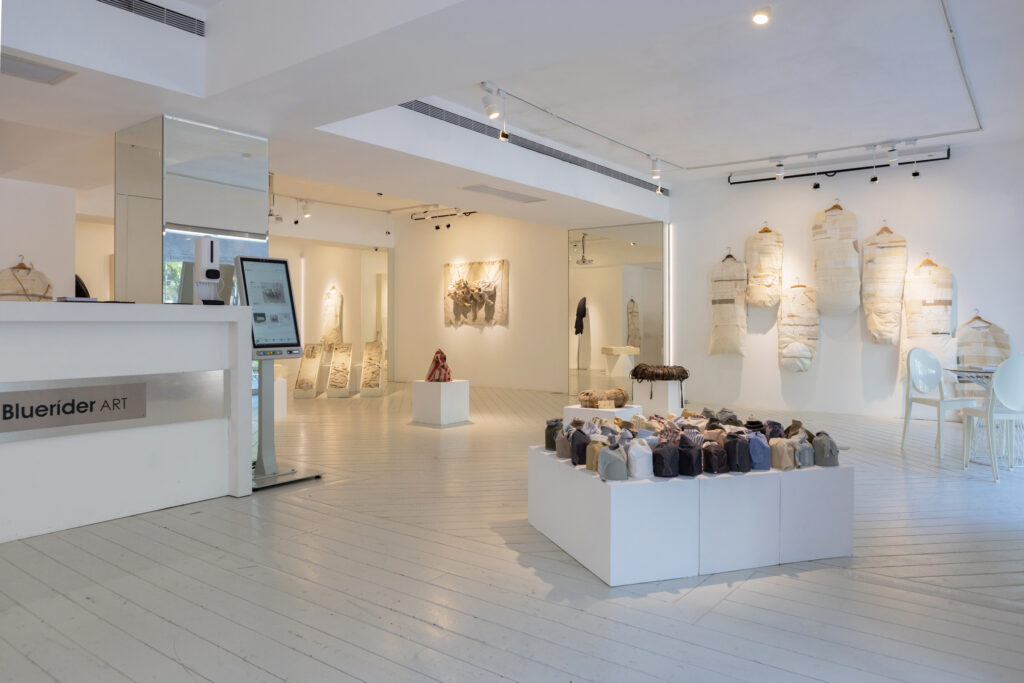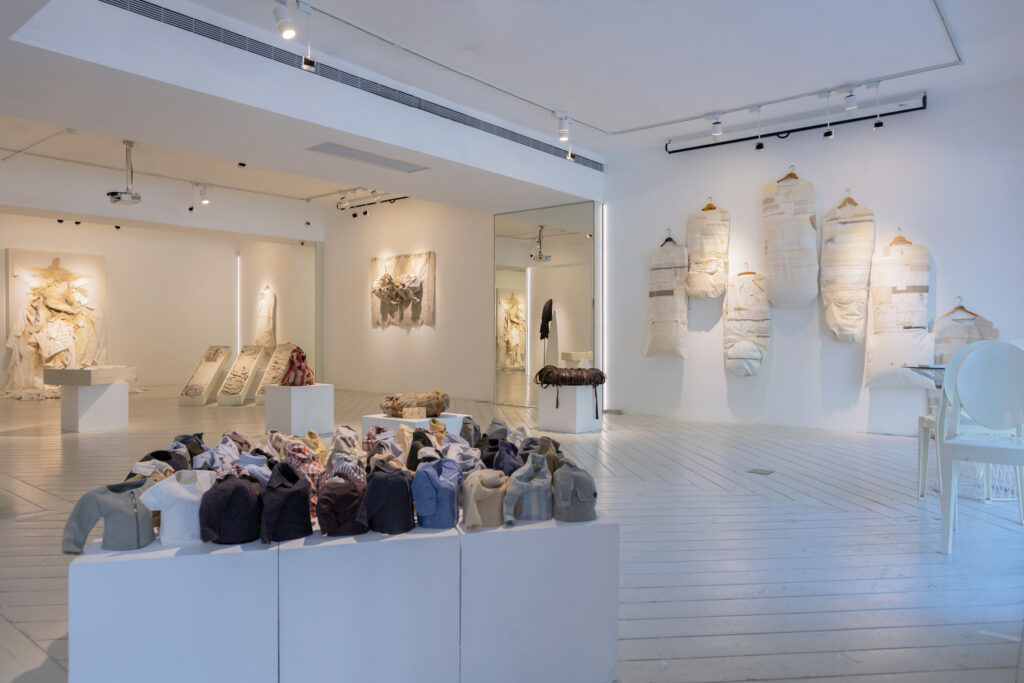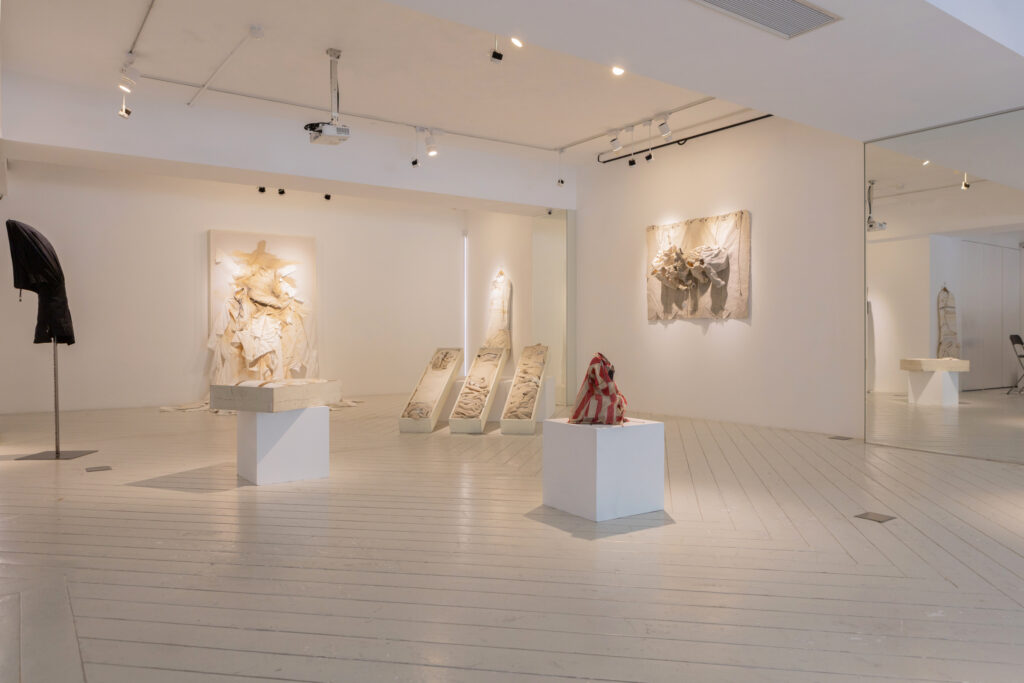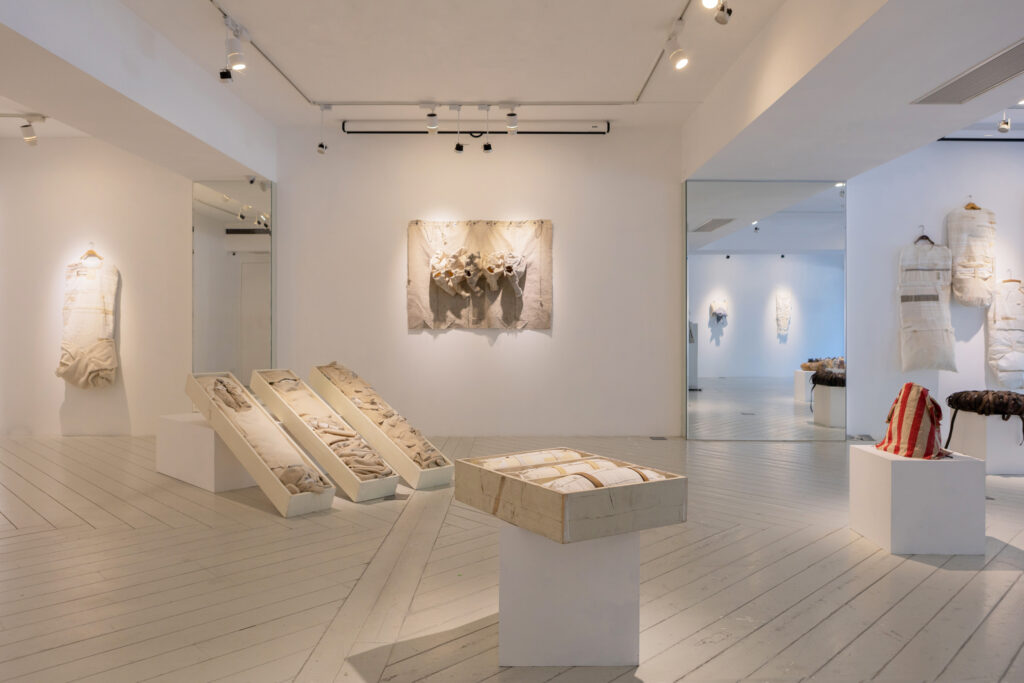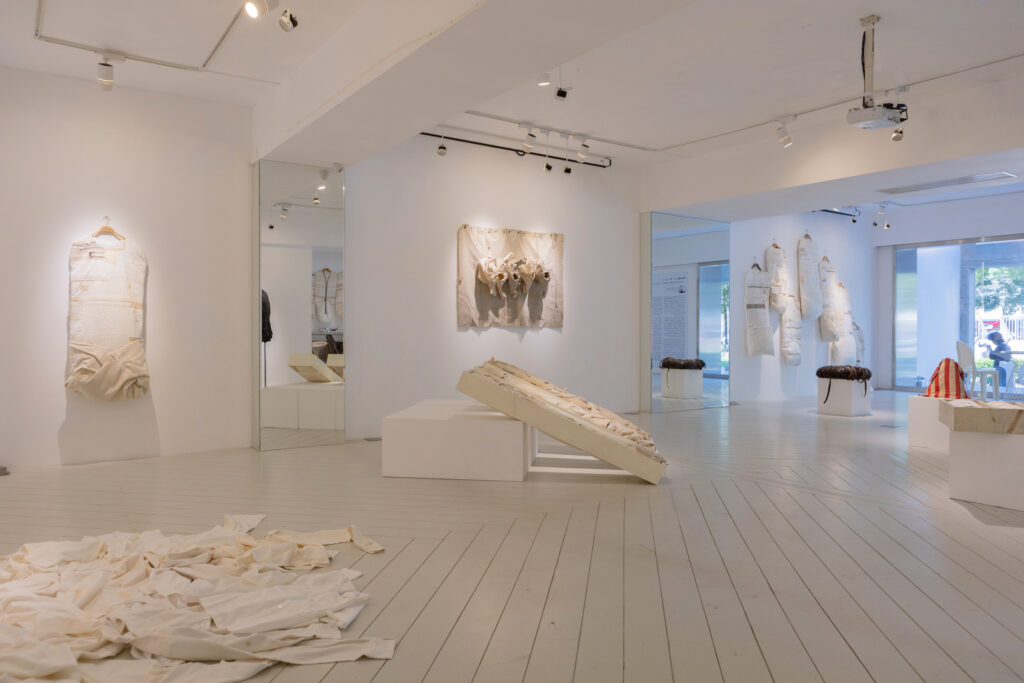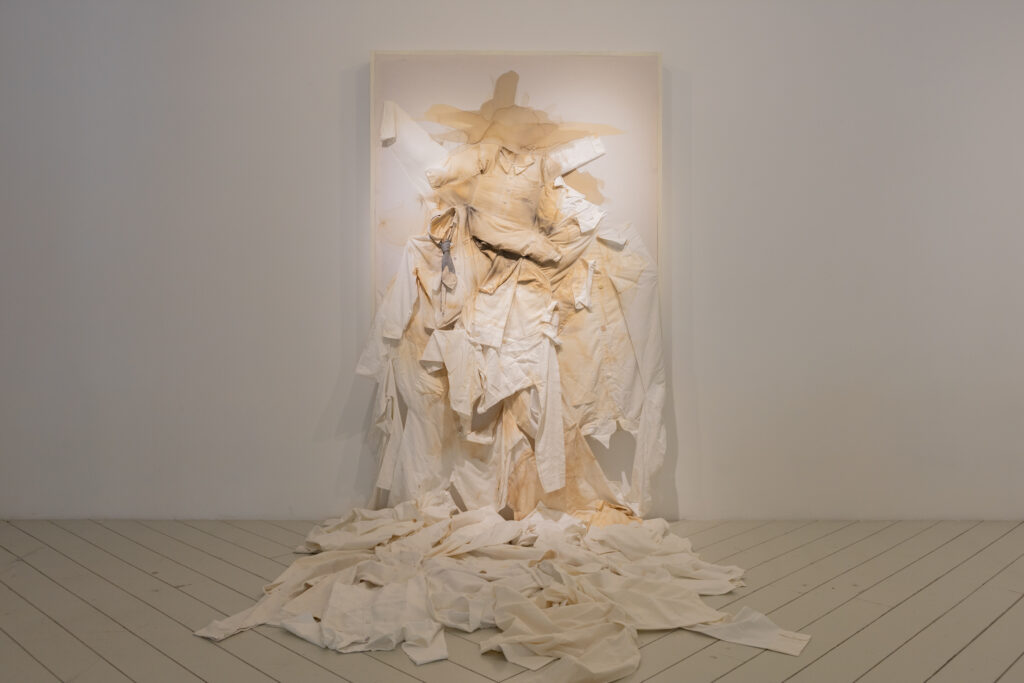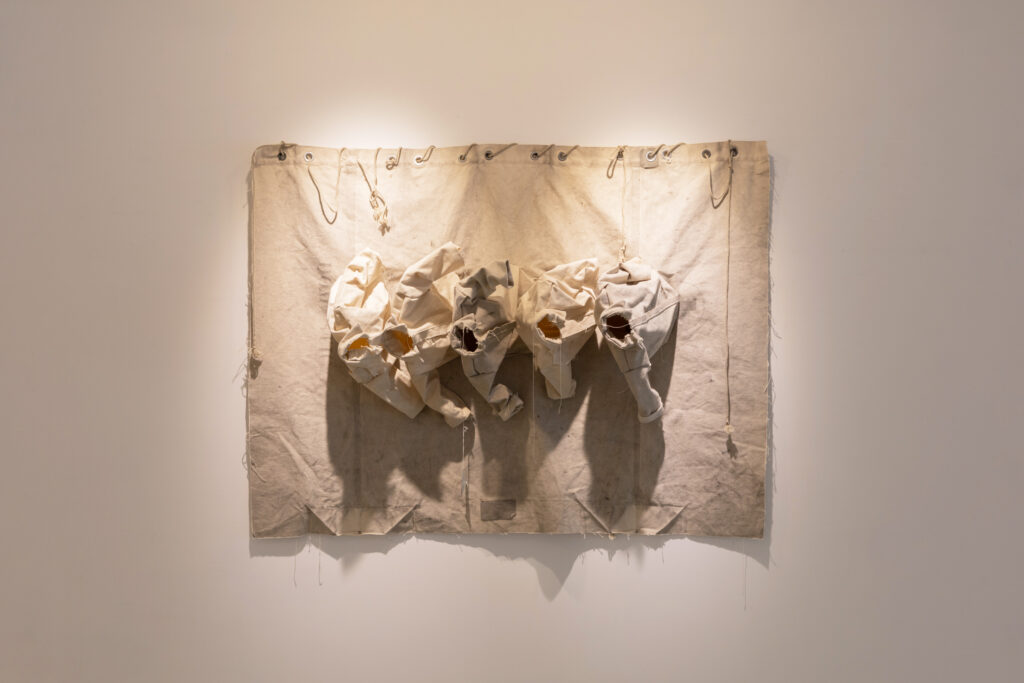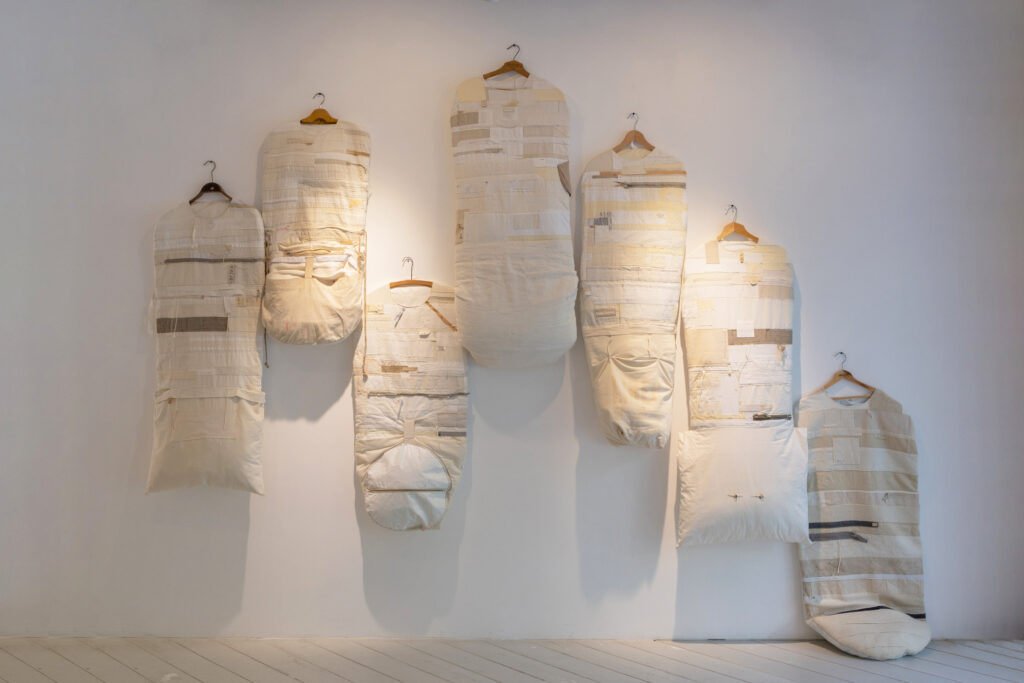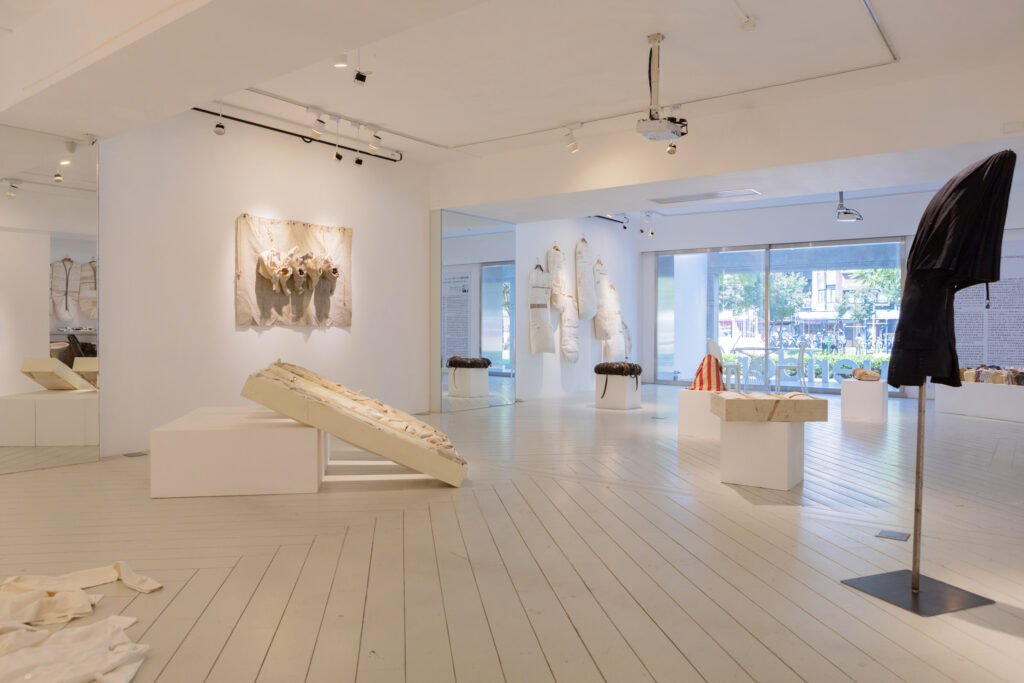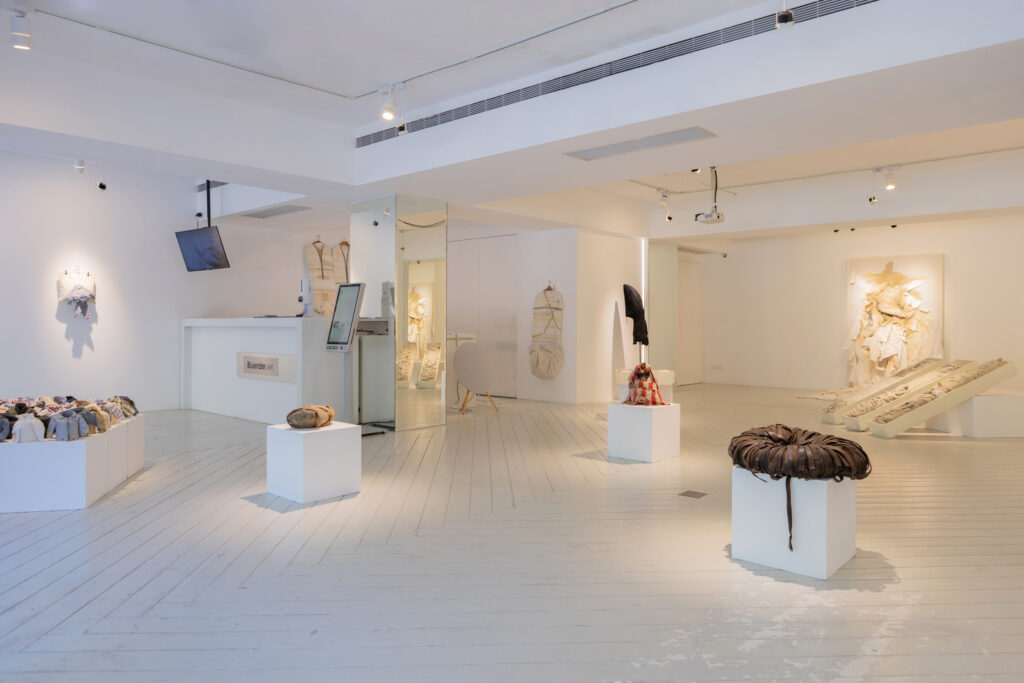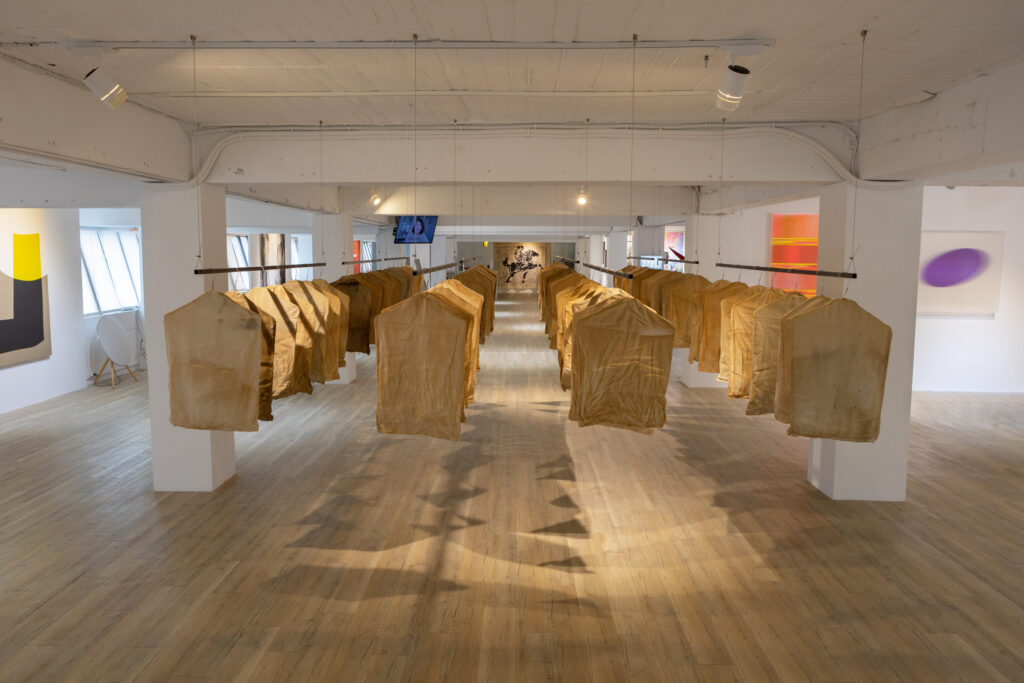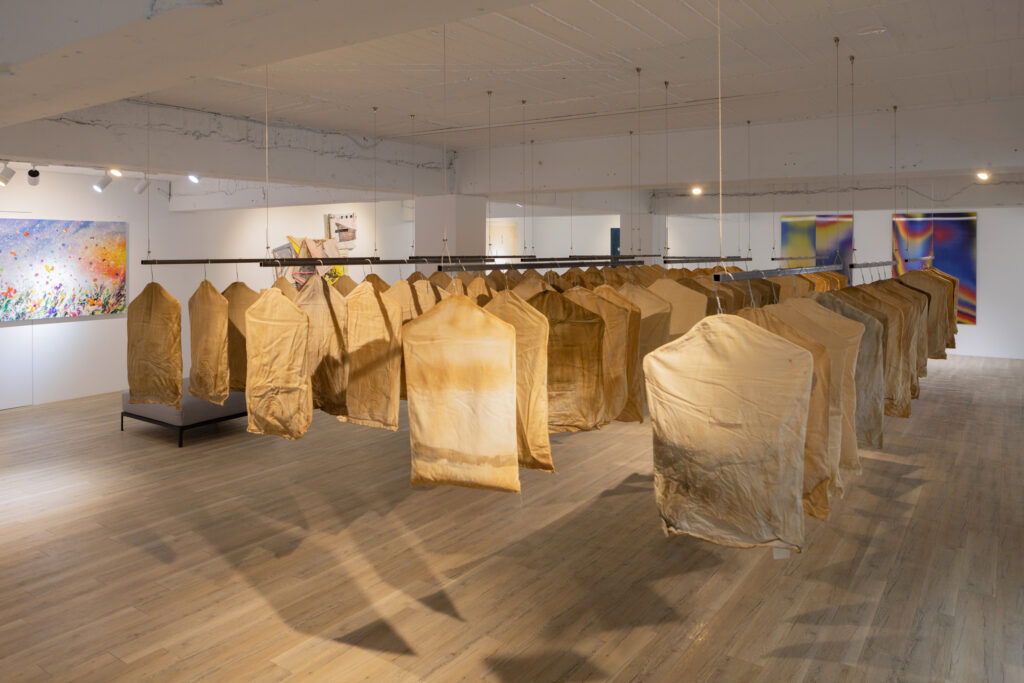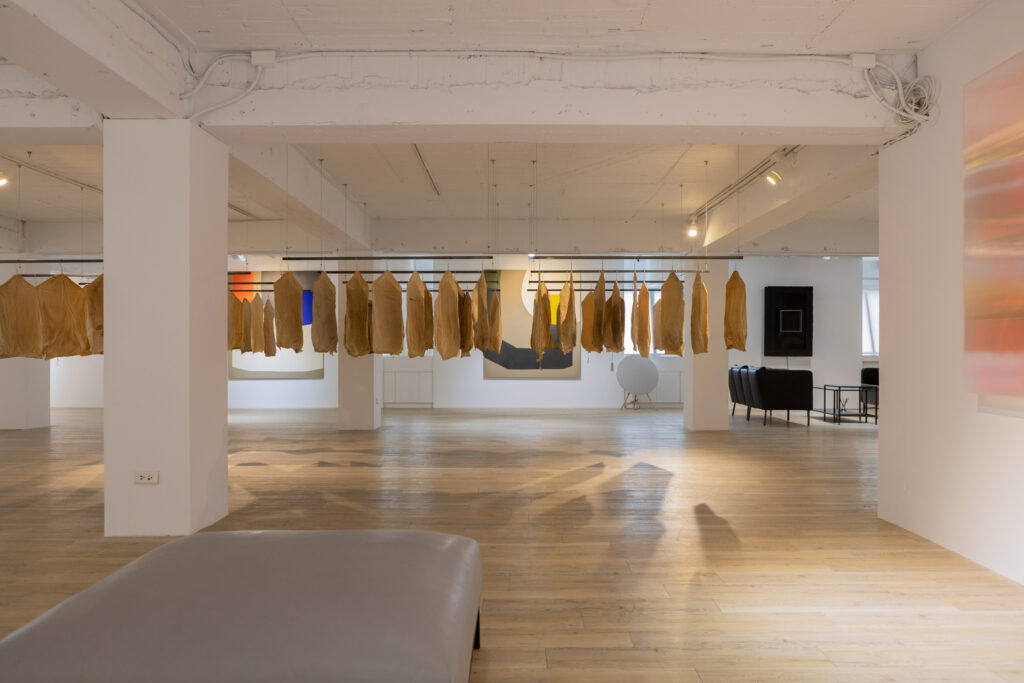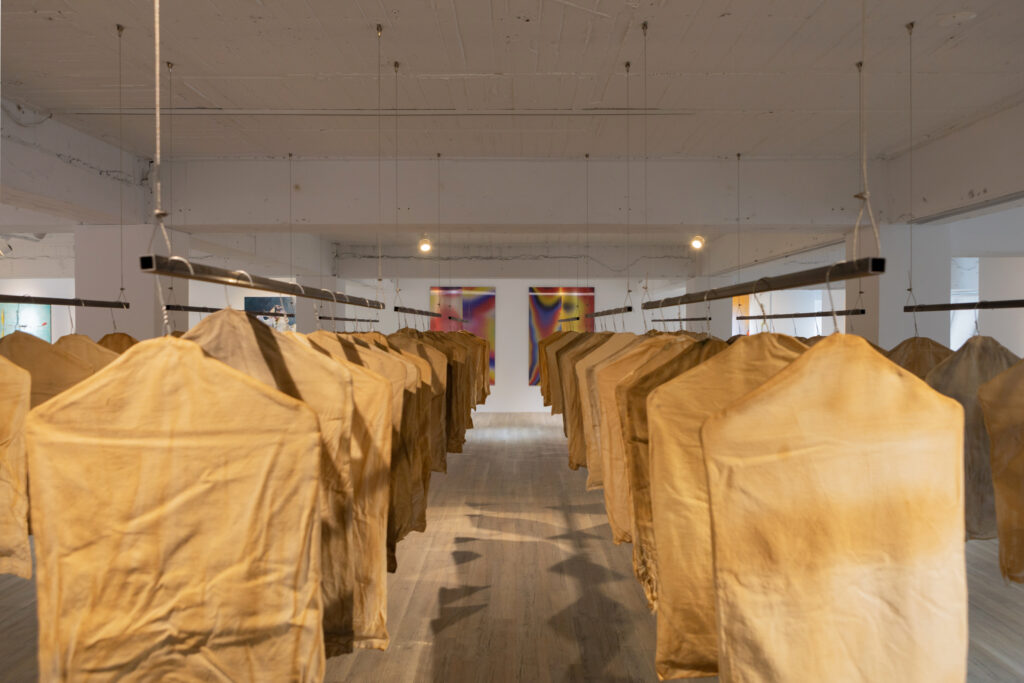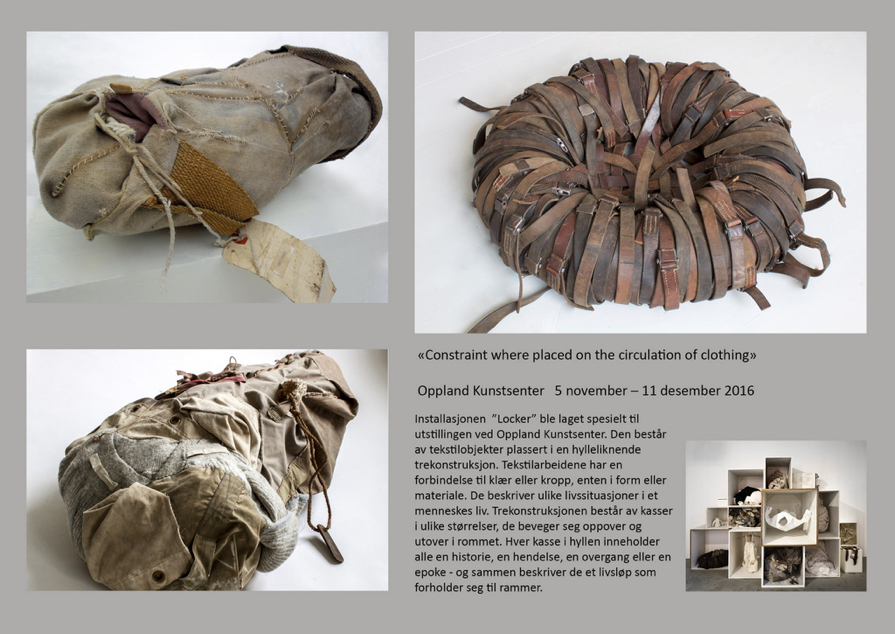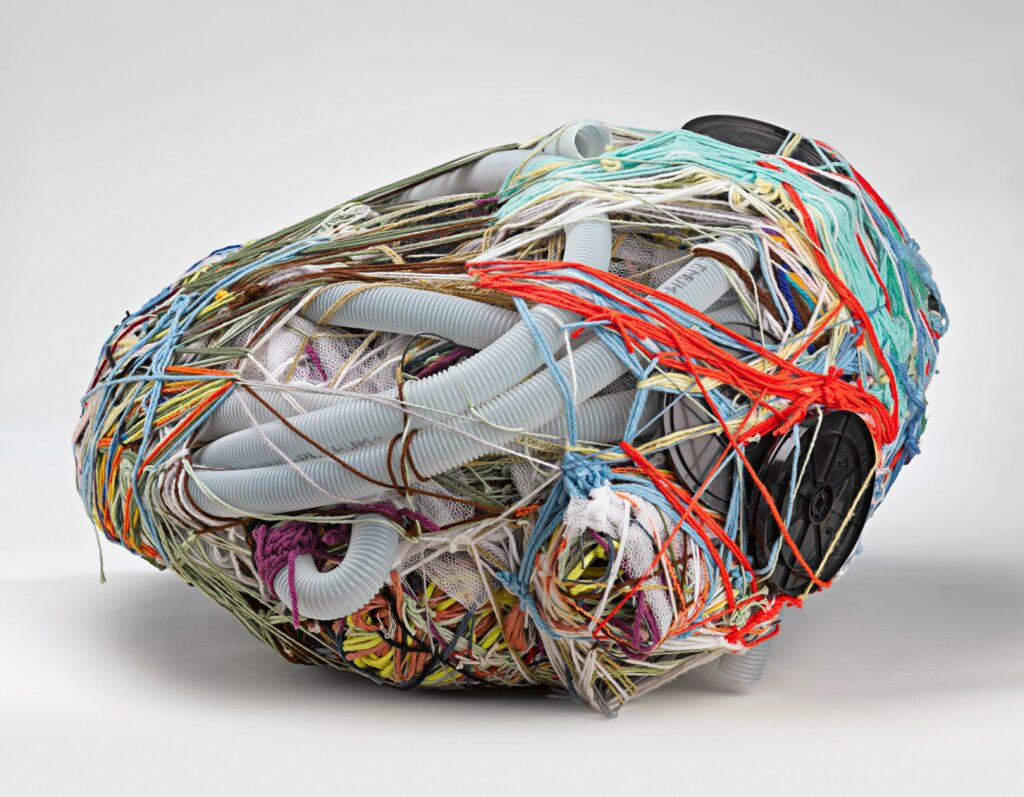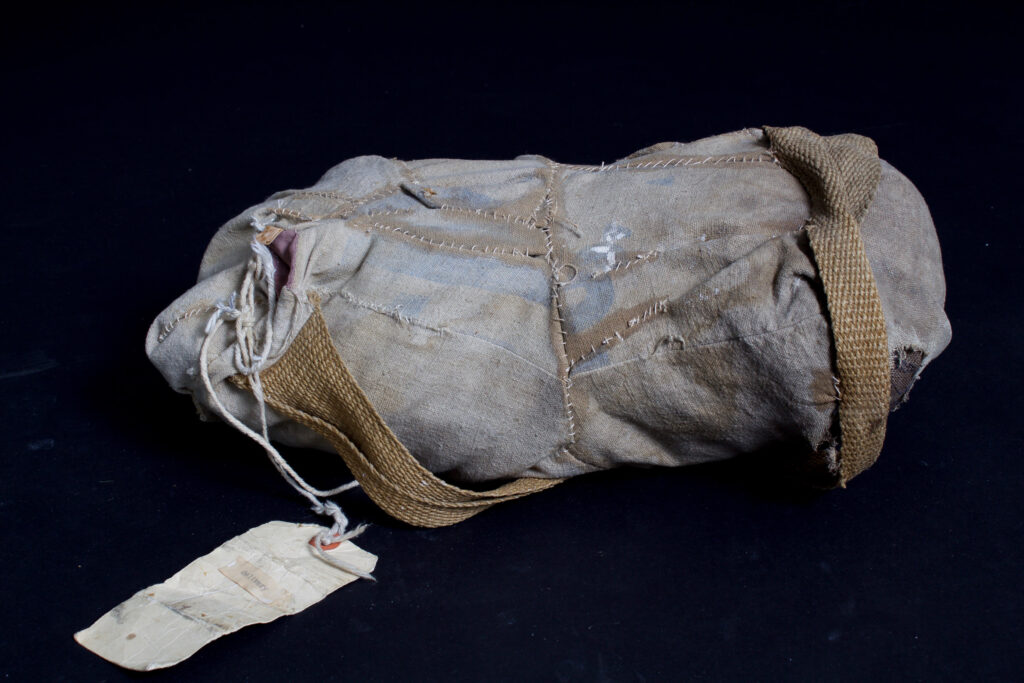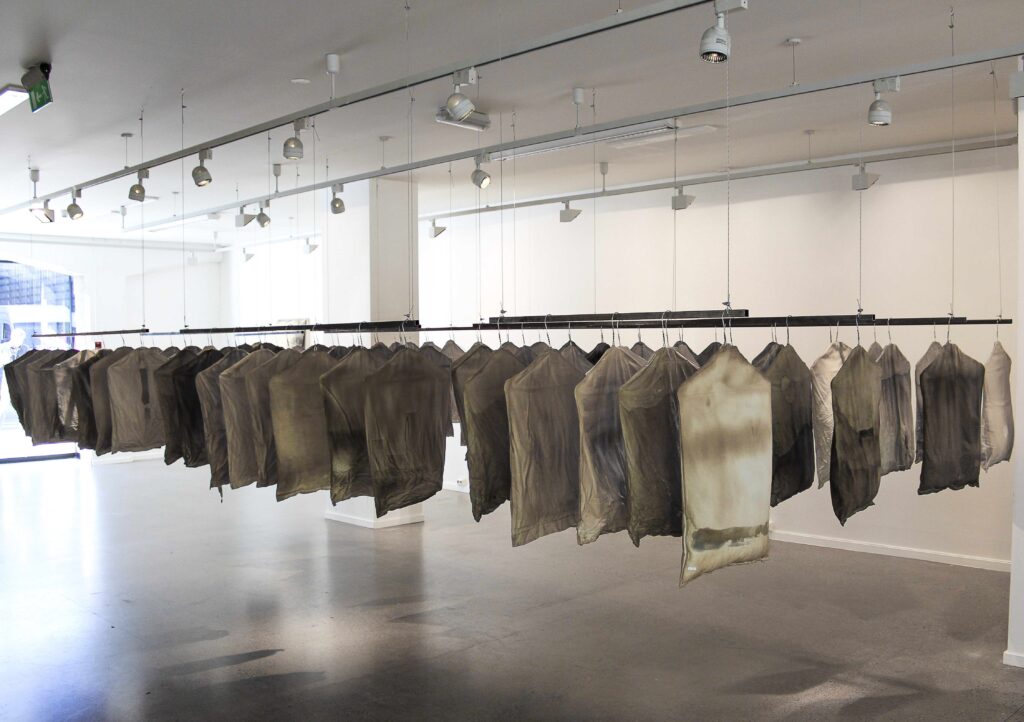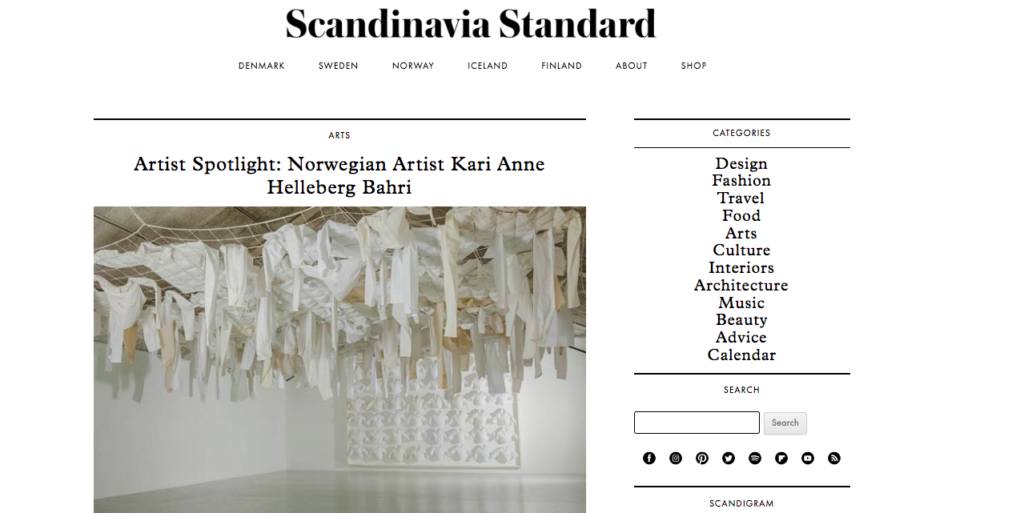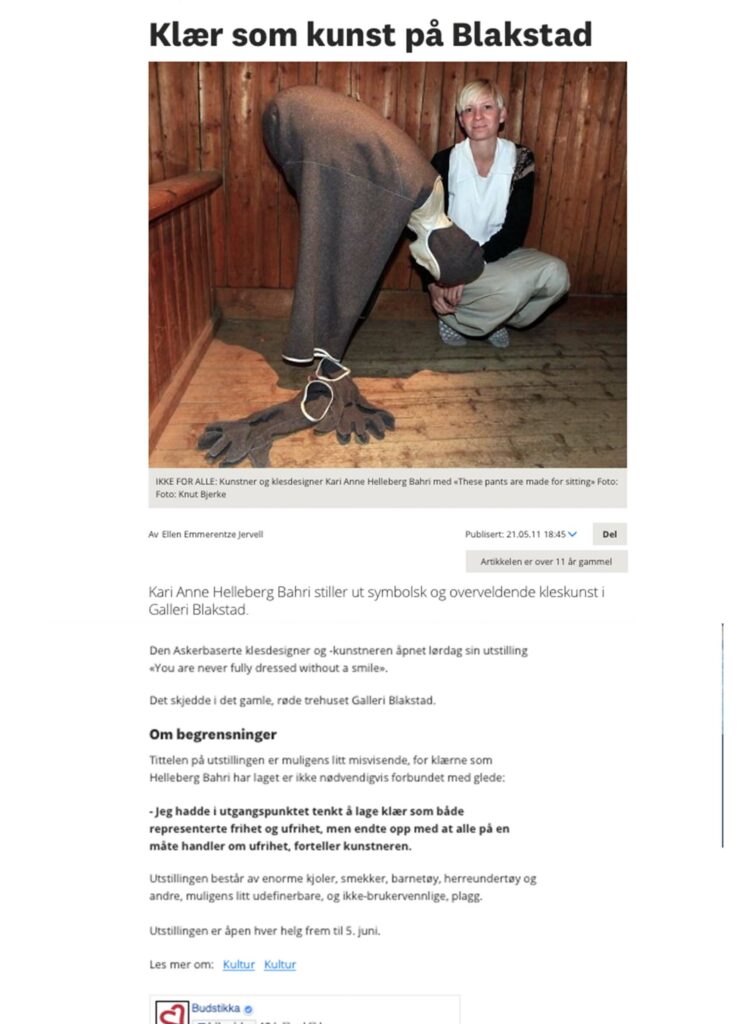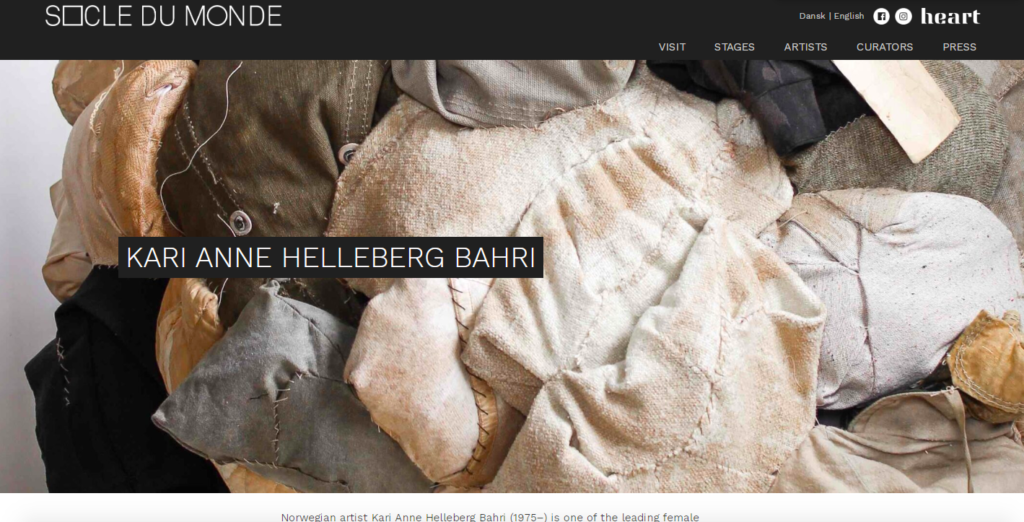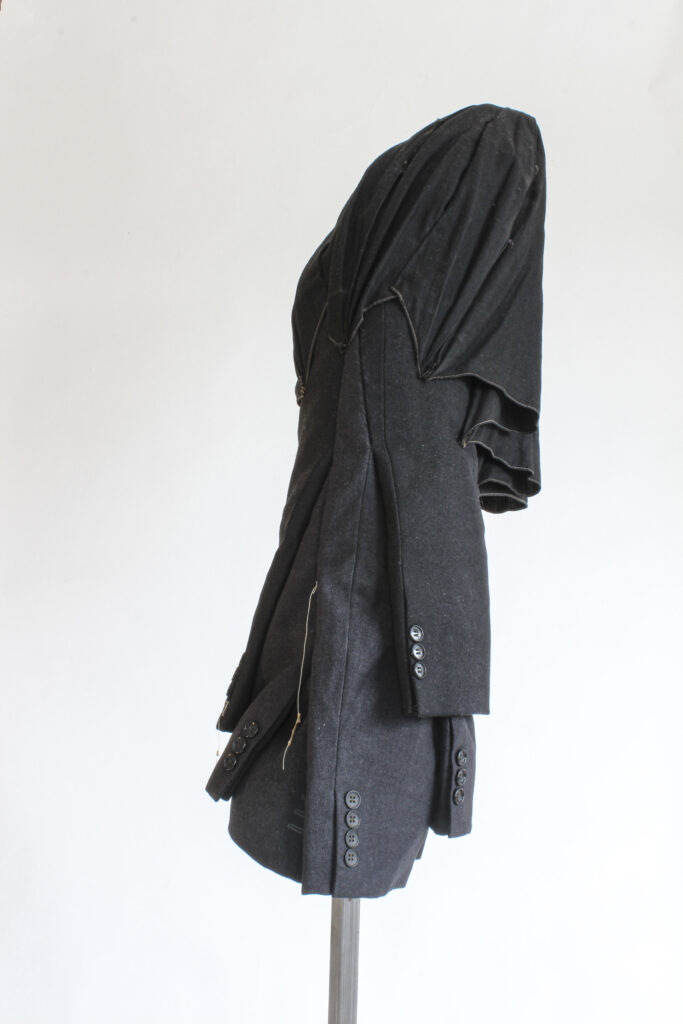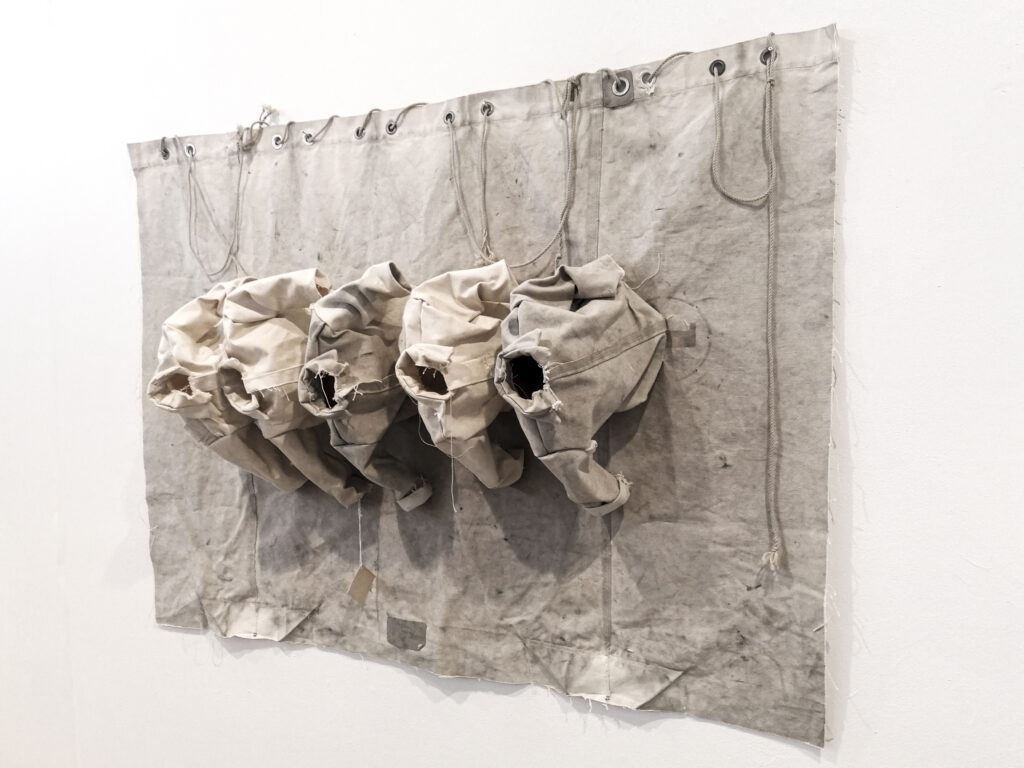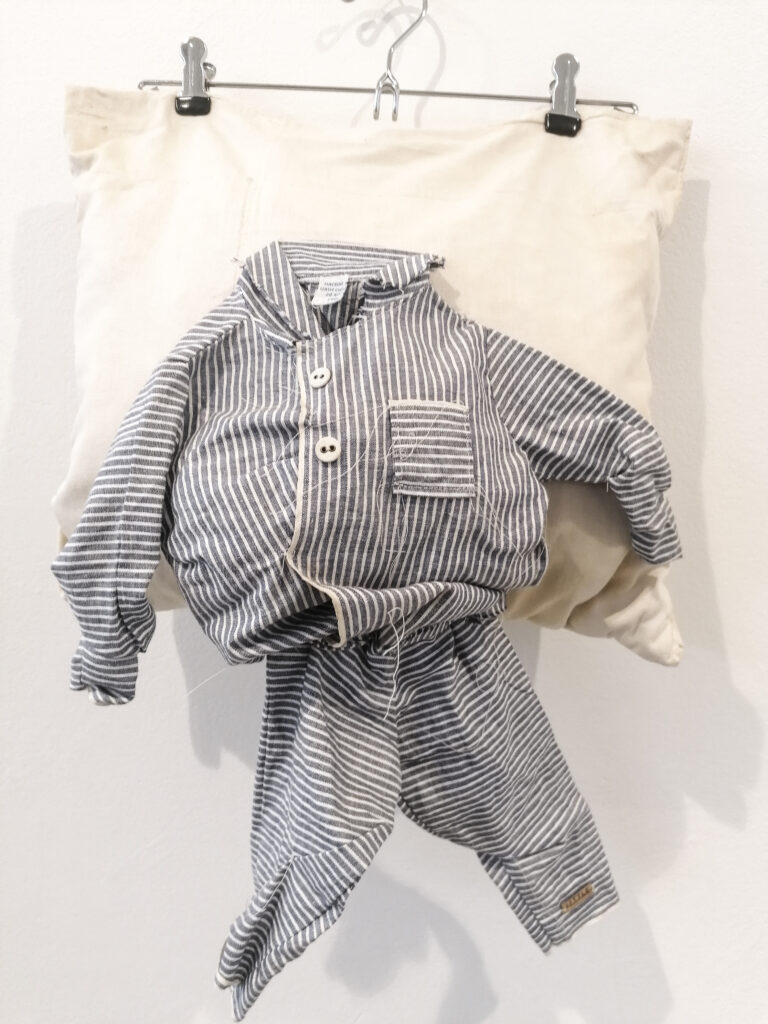Exhibition
Trailer
藝術家訪談影片
Exhibition Tour
Installation
Bluerider ART
「縫合 Sew up」
卡里.安妮.赫勒伯格.巴赫里Kari Anne Helleberg Bahri
亞洲首個展 台北.敦仁|台北.仁愛 雙館呈現
Kari Anne Helleberg Bahri (Norway, b.1975), graduated from the National Academy of Arts in Oslo. Growing up in an environment full of creativity in childhood, Kari Anne escaped from the typical Norwegian minimalist style, inherited the melancholy and cold temperament of Northern Europe, using old clothes, rags, and fragments of fabrics, restitched them and created her own language in textile art. Focusing on the theme of limitations, expectations, regulations, and isolation, these are the subject the each individual confront in the collective society. Kari Anne had exhibited in Kunstmuseet Nord Trøndelag, Danubiana Meulensteen Art Museum in Norway, and Socle Du Monde Biennale in Denmark. Her works are permanently collected by Kongsberg Municipality, Den Norske Husflidforening and many other important institutions.
Kari Anne Helleberg Bahri's childhood came from a poor family. Her mother, a tailor, often used old clothes and other easily available fabrics to create designs, transforming decay into magic, which deeply influenced Bahri's interest in fabrics. The untimely death of her father left her in isolation, silence, self-doubt, and a feeling of being trapped in her own body. Through the process of creating by weaving, patching, and sewing together fabric scraps, she found a way to express herself. Her mother's inspiration as a medium and her father's imagery frequently appear in her creative content. She once said: "I use clothes and fabrics as a language of communication to liberate their function of packaging the body." Fabrics are materials with warmth. Clothing, as an object to cover the body, has the most intimate contact with personal skin. Once it is new, After clothing is worn, it is no longer in a new state. A person's mental state and emotions will leave traces of time on the clothing. It is a private dialogue with oneself, and it is also an individual's external image of himself in society.
Bahri makes good use of hand sewing methods and spends a long time with the collected fabrics to explore the details of the fibers.Using natural materials such as cotton, linen, and wool, Bahri often chooses white or neutral colors for presentation. She believes that art often reflects the heavier aspects of life. The use of neutral colors allows the artwork to be free from the influence of either pleasant or sad emotions. It liberates the confined body, transcending the limitations of self-imposed constraints and thereby creating a unique life story.Using weaving thread as a paintbrush, her creations explore issues such as Limitations, Restrictions, Expectations, and Isolation in current society. Through the reinterpretation and recreation of the chaos, abandonment, flaws, decay, and imperfections of ready-made objects, she allows viewers to escape from their own circles. , reflect on the memory experience from an objective position, and from this position stimulate the process of self-dialogue, identification, and compromise of "who I was in the past," "who I am in the future," and "who I can be."
In the textile art of the 20th century, artists used the toughness of fibers and the intimacy of fabrics to connect the body to express their own positions and differentiate themselves from traditional weaving techniques. Anni Albers, a German-American artist, was the first to break the boundaries between art and craft. She used the characteristics of fabric fibers to incorporate natural materials, synthetic threads, and metal plastics into tapestries to study the geometric layout and composition of the picture balance.American artist Judith Scott is renowned for her use of textile wrapping to create a series of everyday objects. The linear, entwined forms suggest a process that alludes to rituals and games.Contemporary Japanese artist Chiharu Shiota uses installations composed of wool and ready-made objects to guide viewers to experience the journey of life and completely record the fear of death.Kari Anne Helleberg Bahri's works, in contrast to representing the individual experience of life through weaving, involve old fabric traces, hand-sewn threads, and stitching together fragments of time. Her art serves as a counterforce against the societal values impacting individuality, offering a more profound and nuanced interpretation.
這次在Bluerider ART登場「縫合」(Sew up) -卡里.安妮.赫勒伯格.巴赫里Kari Anne Helleberg Bahri亞洲首個展,亦是Bluerider ART 首次代理、展出織品藝術Textile Art,展場聯合台北.敦仁、台北.仁愛雙館,將展出其歷年來的系列代表作品,從牆上到大型集合裝置。展名「縫合」(Sew up)具有多重意義,外在現成織品的纖維解構與縫補,內在喚起個人時間碎片記憶的共感,並對單一個體在整個社會群體中關於限制、秩序、期待、孤立的對抗與和解。台北.敦仁展出作品 Circus (2017) 記憶中父親工作的既是小丑裝,也是馬戲團帳篷,勾起人前歡樂人後悲苦、笑中帶淚的共感經驗。作品Inception (2016)選用舊麻布袋縫線縫製而成,暗喻著懷胎過程的辛苦與新生的喜悅。作品Sleep tight (2014)將衣物束縛在盒中,一方面呈現身體受包裹的安全感,一方面也形成限制身體的無形框架。作品 General People (2013)則用各式不同的襯衫及外套組合的群體,表現社會集體的心理狀態,看似可愛的造型背後隱含質疑的反差。台北.仁愛則展出大型集合裝置Garment Bags (2016),由80件衣架衣袋組合,向著同一個方向整齊排列。人們對於什麼時期應該做什麼事有著共同的觀點,進而觸發某種期待亦是限制,表現其實人都害怕被孤立,也為符合社會期待而遵守秩序。
「縫合 Sew up」
卡里.安妮.赫勒伯格.巴赫里Kari Anne Helleberg Bahri 亞洲首個展
VIP Opening 開幕式 (藏家預覽)
10.8 Sat. 2pm – 5pm
Open to public大眾開放
10.8 Sat. 5pm – 7pm
展期
2022.10.8 – 12.11
地點
Bluerider ART 台北.敦仁Tue.-Sun., 10am – 7pm
台北市大安區大安路一段 101 巷 10 號 1F
Bluerider ART 台北.仁愛Tue.-Sat., 9am – 6pm
10F., No. 25-1, Sec. 4, Renai Rd., Taipei
Artist
Kari Anne Helleberg Bahri
卡里.安妮.赫勒伯格.巴赫里
(Norway , b. 1975 )
Kari Anne Helleberg Bahri (Norway, b.1975), graduated from the National Academy of Arts in Oslo. Growing up in an environment full of creativity in childhood, Kari Anne escaped from the typical Norwegian minimalist style, inherited the melancholy and cold temperament of Northern Europe, using old clothes, rags, and fragments of fabrics, restitched them and created her own language in textile art. Focusing on the theme of limitations, expectations, regulations, and isolation, these are the subject the each individual confront in the collective society. Kari Anne had exhibited in Kunstmuseet Nord Trøndelag, Danubiana Meulensteen Art Museum in Norway, and Socle Du Monde Biennale in Denmark. Her works are permanently collected by Kongsberg Municipality, Den Norske Husflidforening and many other important institutions.

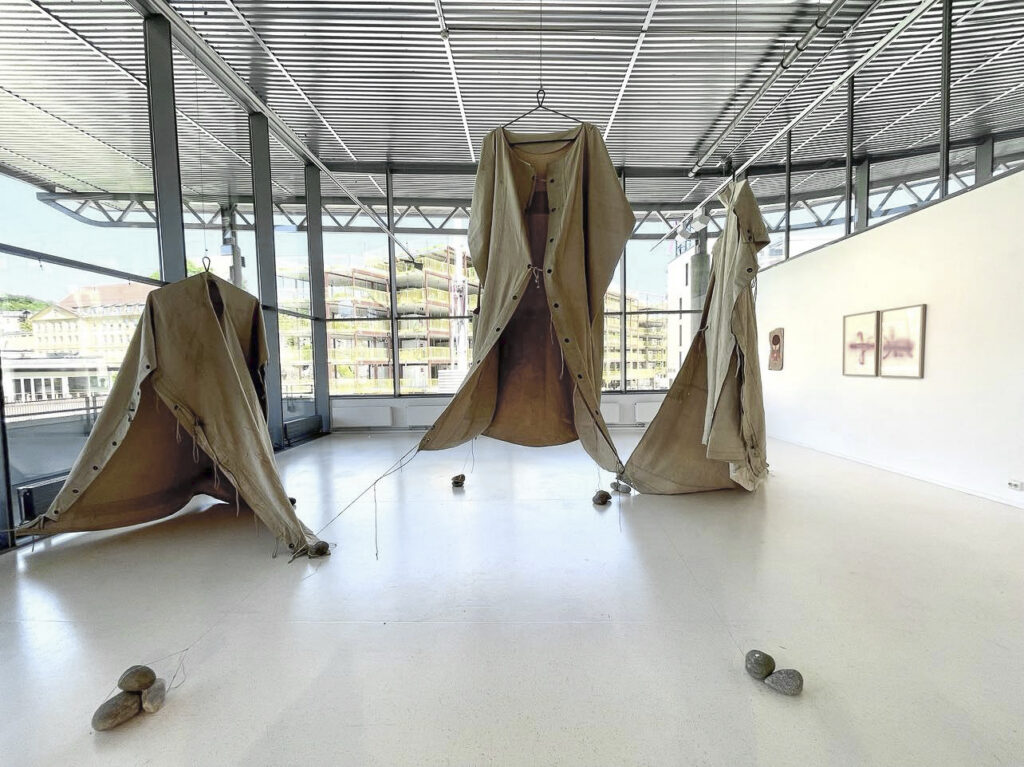
2022 Sørlandsutstillingen, Annual exhibition for the southern region, Norway. 
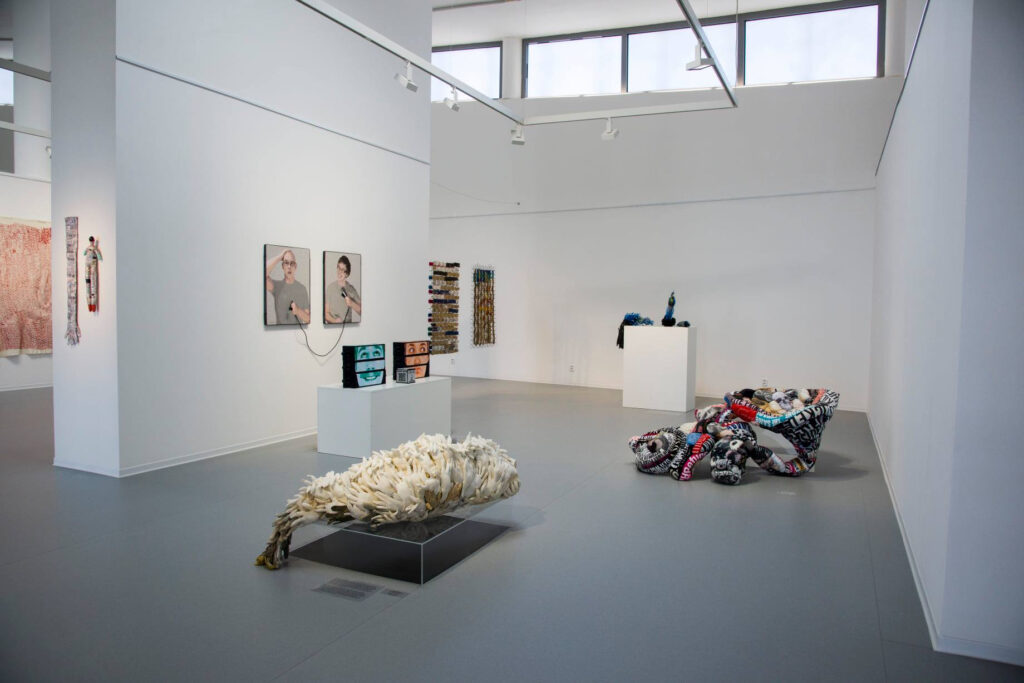
2021/2022. Danubiana Meulensteen Art Museum, 6th “Textile art of today” , triennale , Slovak Republic, Hungary & Polan


2021 Socle Du Monde Biennale, Herning, Denmark 
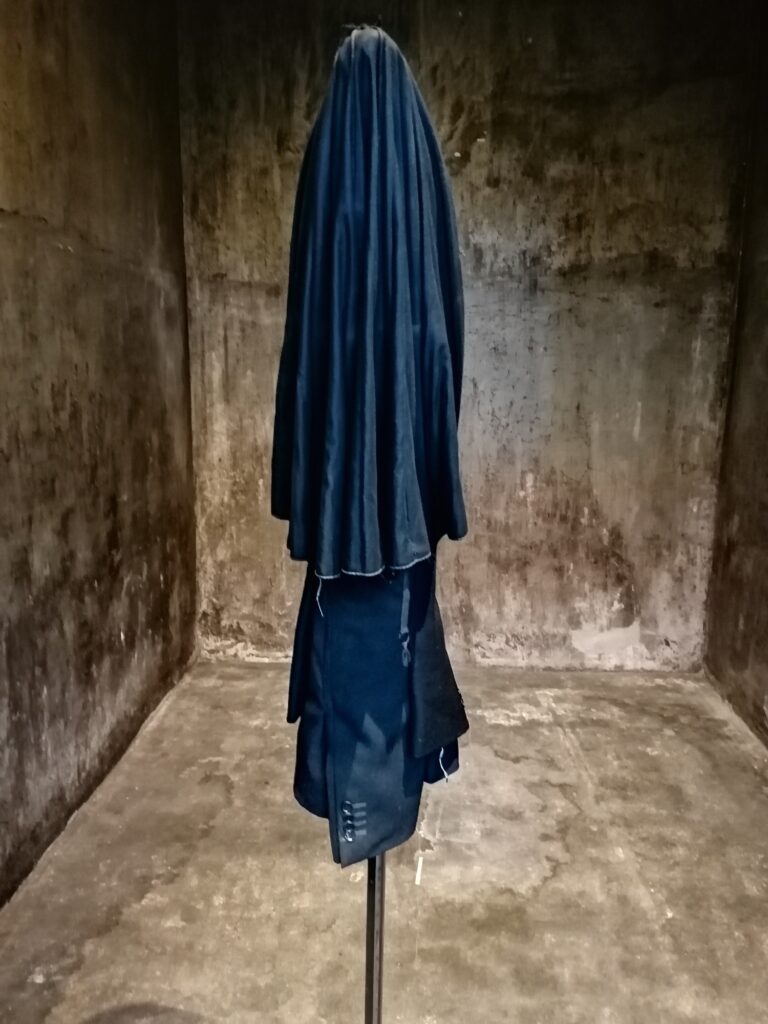
2021 Socle Du Monde Biennale, Herning, Denmark

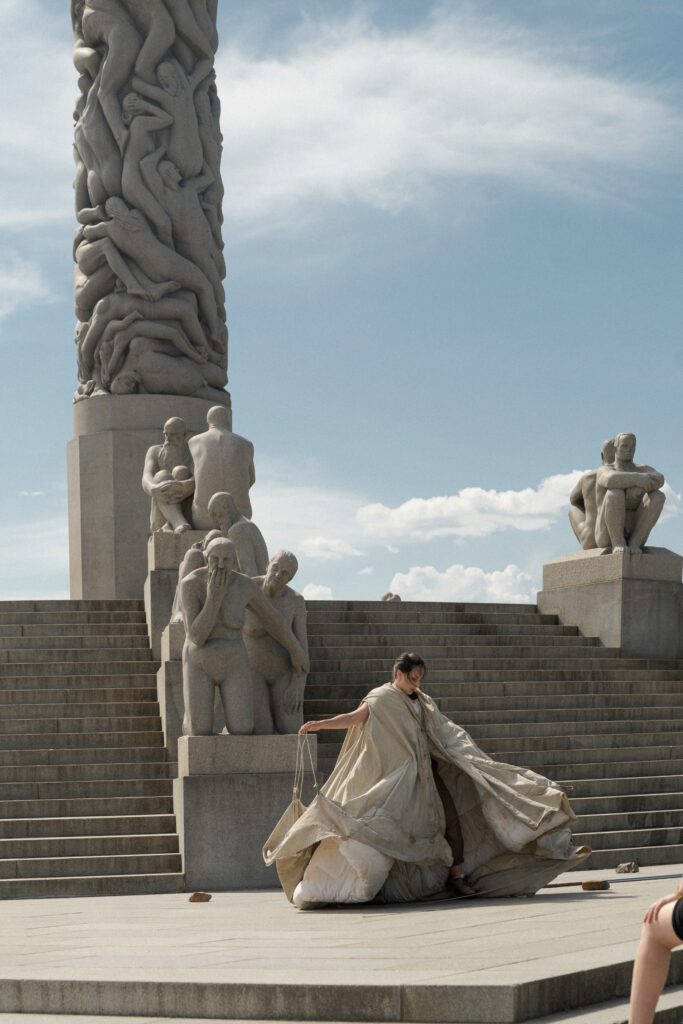
Collective Oslo, performance The Vigeland Park 
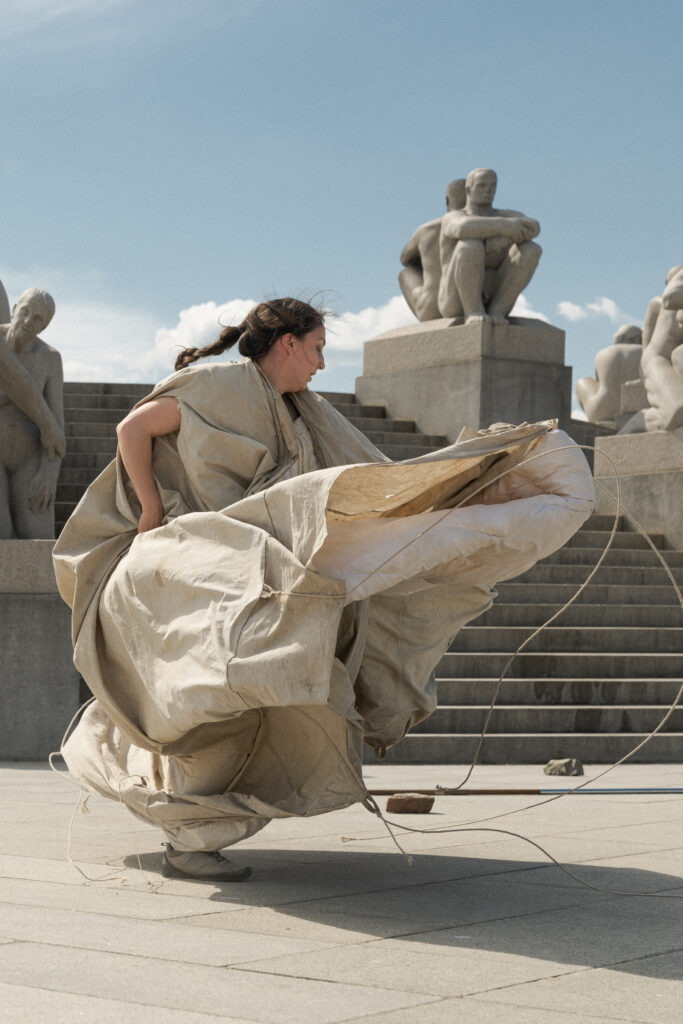
Collective Oslo, performance The Vigeland Park

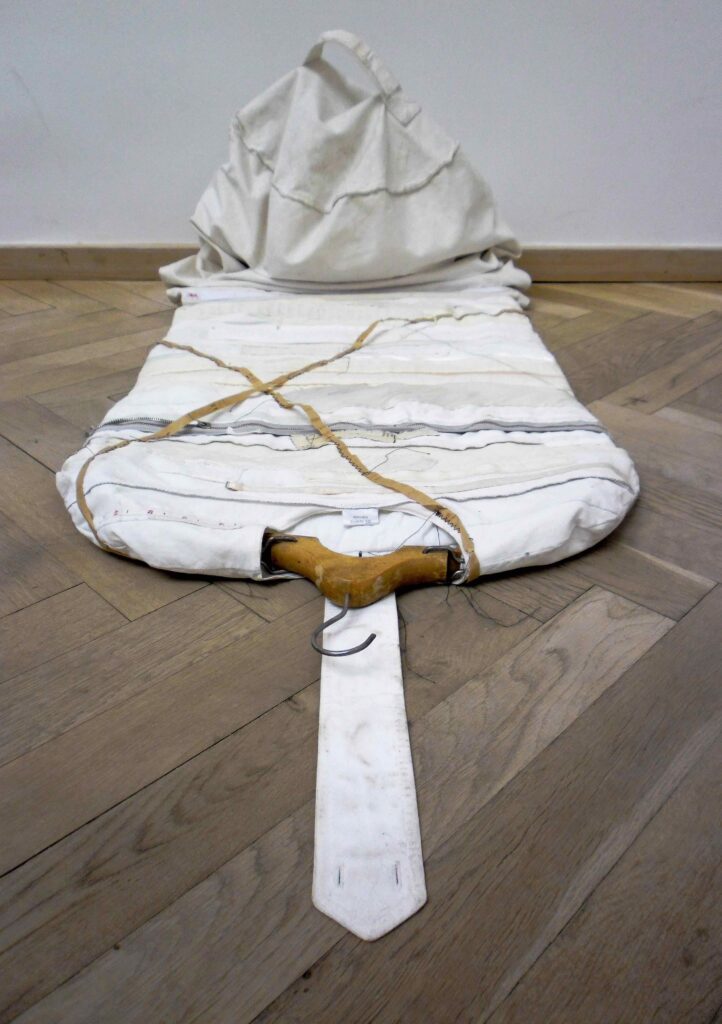
2020 Royal Society of Sculptors Summer Exhibition , London, UK 
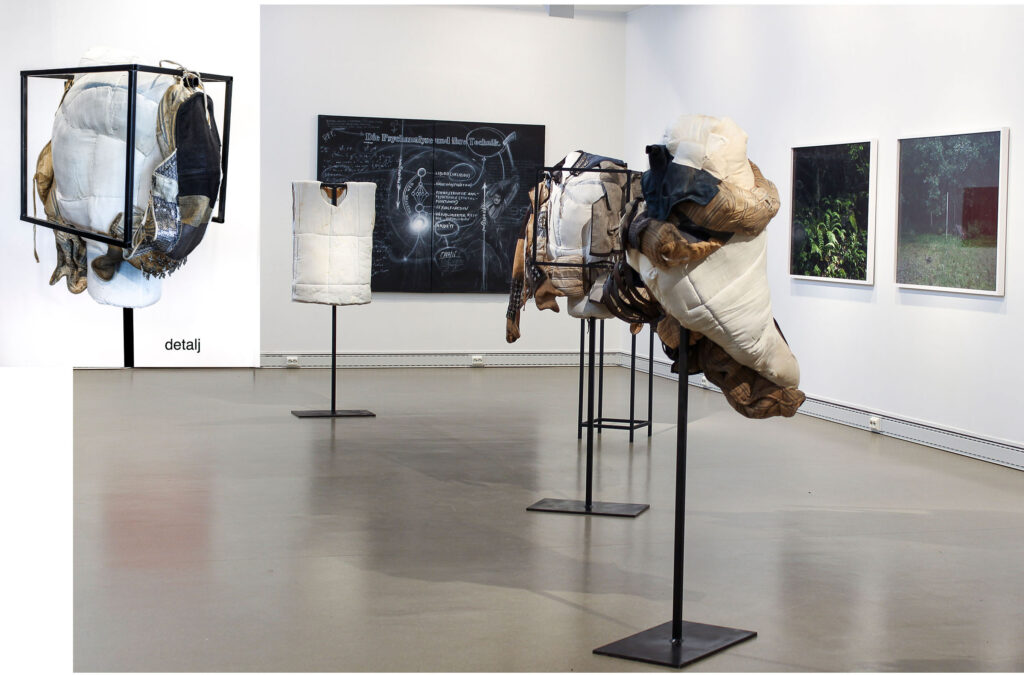
2019 “Østlandsutstillingen 40 år” Kongsberg Kunstforening ,Konsberg

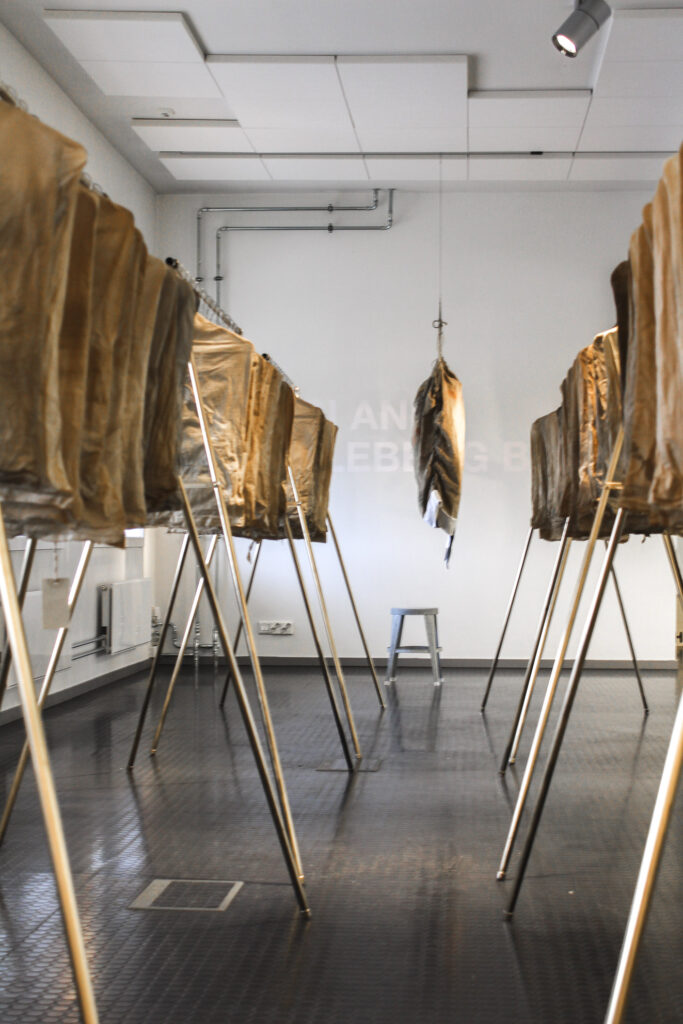
2017 Uncontaminated, Mellomstasjonen, The National Museum 
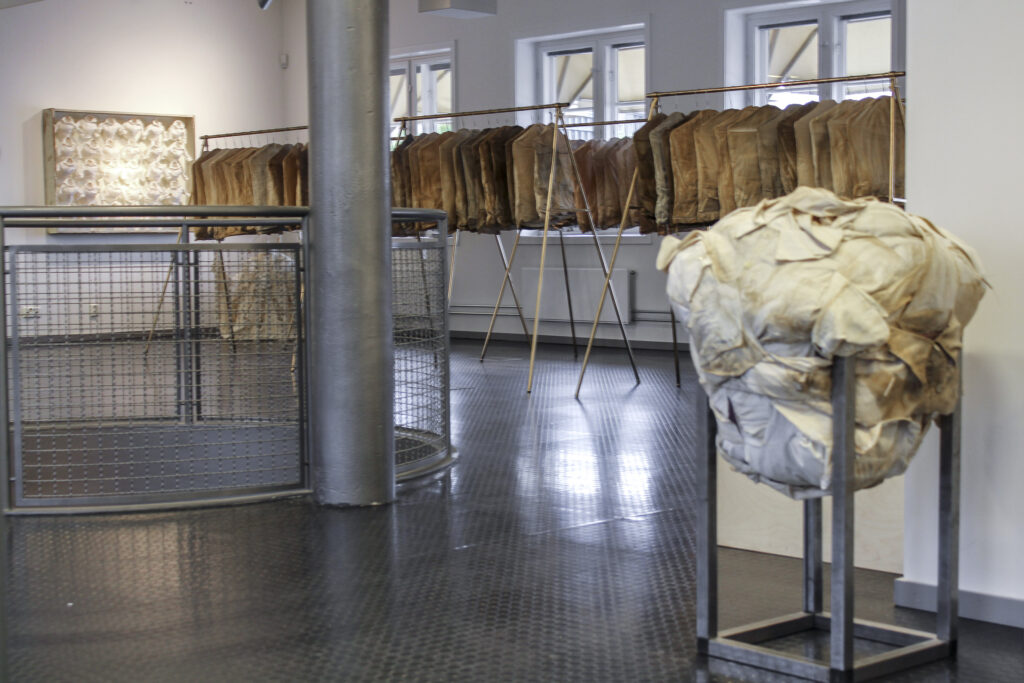
2017 Uncontaminated, Mellomstasjonen, The National Museum
Kari Anne Helleberg Bahri's childhood came from a poor family. Her mother, a tailor, often used old clothes and other easily available fabrics to create designs, transforming decay into magic, which deeply influenced Bahri's interest in fabrics. The untimely death of her father left her in isolation, silence, self-doubt, and a feeling of being trapped in her own body. Through the process of creating by weaving, patching, and sewing together fabric scraps, she found a way to express herself. Her mother's inspiration as a medium and her father's imagery frequently appear in her creative content. She once said: "I use clothes and fabrics as a language of communication to liberate their function of packaging the body." Fabrics are materials with warmth. Clothing, as an object to cover the body, has the most intimate contact with personal skin. Once it is new, After clothing is worn, it is no longer in a new state. A person's mental state and emotions will leave traces of time on the clothing. It is a private dialogue with oneself, and it is also an individual's external image of himself in society.
Bahri makes good use of hand sewing methods and spends a long time with the collected fabrics to explore the details of the fibers.Using natural materials such as cotton, linen, and wool, Bahri often chooses white or neutral colors for presentation. She believes that art often reflects the heavier aspects of life. The use of neutral colors allows the artwork to be free from the influence of either pleasant or sad emotions. It liberates the confined body, transcending the limitations of self-imposed constraints and thereby creating a unique life story.Using weaving thread as a paintbrush, her creations explore issues such as Limitations, Restrictions, Expectations, and Isolation in current society. Through the reinterpretation and recreation of the chaos, abandonment, flaws, decay, and imperfections of ready-made objects, she allows viewers to escape from their own circles. , reflect on the memory experience from an objective position, and from this position stimulate the process of self-dialogue, identification, and compromise of "who I was in the past," "who I am in the future," and "who I can be."
In the textile art of the 20th century, artists used the toughness of fibers and the intimacy of fabrics to connect the body to express their own positions and differentiate themselves from traditional weaving techniques. Anni Albers, a German-American artist, was the first to break the boundaries between art and craft. She used the characteristics of fabric fibers to incorporate natural materials, synthetic threads, and metal plastics into tapestries to study the geometric layout and composition of the picture balance.American artist Judith Scott is renowned for her use of textile wrapping to create a series of everyday objects. The linear, entwined forms suggest a process that alludes to rituals and games.Contemporary Japanese artist Chiharu Shiota uses installations composed of wool and ready-made objects to guide viewers to experience the journey of life and completely record the fear of death.Kari Anne Helleberg Bahri's works, in contrast to representing the individual experience of life through weaving, involve old fabric traces, hand-sewn threads, and stitching together fragments of time. Her art serves as a counterforce against the societal values impacting individuality, offering a more profound and nuanced interpretation.
Kari Anne Helleberg Bahri uses Textile art as a storytelling medium. On the surface, she manipulates chaotic elements such as rags, fabrics, threads, and fragments. In fact, she deeply dissects the memory temperature felt by clothing traces and the psychology hidden in the profound inner world. State, through creation, she presents a microcosm of human nature with emotions of joy, anger, sorrow, and joy. Her art is a critical reconciliation, and it is also a concern for the depths of the soul.


